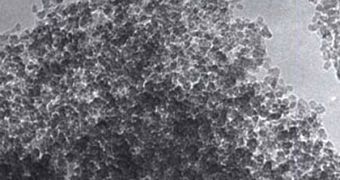A new archaeological investigation conducted on the Santa Rosa Island off the coast of Santa Barbara by scientists from the University of California in Santa Barbara (UCSB) has revealed traces of nanodiamonds, which seem to indicate that a comet struck the location some 12,900 years ago. The team believes that traces of the comet scattered across the North American continent at that time, and that this location is only one of those impacted. Details of the study appear in this week's issue of the journal Proceedings of the National Academy of Sciences (PNAS).
“The pygmy mammoth, the tiny island version of the North American mammoth, died off at this time. Since it coincides with this event, we suggest it is related,” UCSB Professor Emeritus James Kennett, who conducted the research with his son, Douglas J. Kennett, and 15 other scientists, says. He also reveals that the ground layer in which the hexagonal nanodiamonds were found is part of the larger layer called the Younger Dryas Boundary. Experts believe that this earth tells the story of a time that experienced drastic climate changes and widespread wildfires.
James Kennett explains that, “There was a major event 12,900 years ago. It is hard to explain this assemblage of materials without a cosmic impact event and associated extensive wildfires. This hypothesis fits with the abrupt climatic cooling as recorded in ocean-drilled sediments beneath the Santa Barbara Channel. The cooling resulted when dust from the high-pressure, high-temperature, multiple impacts was lofted into the atmosphere, causing a dramatic drop in solar radiation.”
The small carbon compounds were found only four meters underground, and are estimated to reside in the same history “layer” as the disappearance of the Clovis culture, the first widespread one in Northern America. Additionally, archaeologists and anthropologists believe, some 35 species of mammals and 19 species of birds became extinct at about the same time. The nanodiamonds were surrounded in soot, which is regularly formed by wildfires, at fairly high temperatures.
“The type of diamond we have found – lonsdaleite – is a shock-synthesized mineral defined by its hexagonal crystalline structure. It forms under very high temperatures and pressures consistent with a cosmic impact. These diamonds have only been found thus far in meteorites and impact craters on earth, and appear to be the strongest indicator yet of a significant cosmic impact [during the Clovis age],” Douglas Kennett, who is also an associate professor of anthropology at the University of Oregon, concludes.

 14 DAY TRIAL //
14 DAY TRIAL //